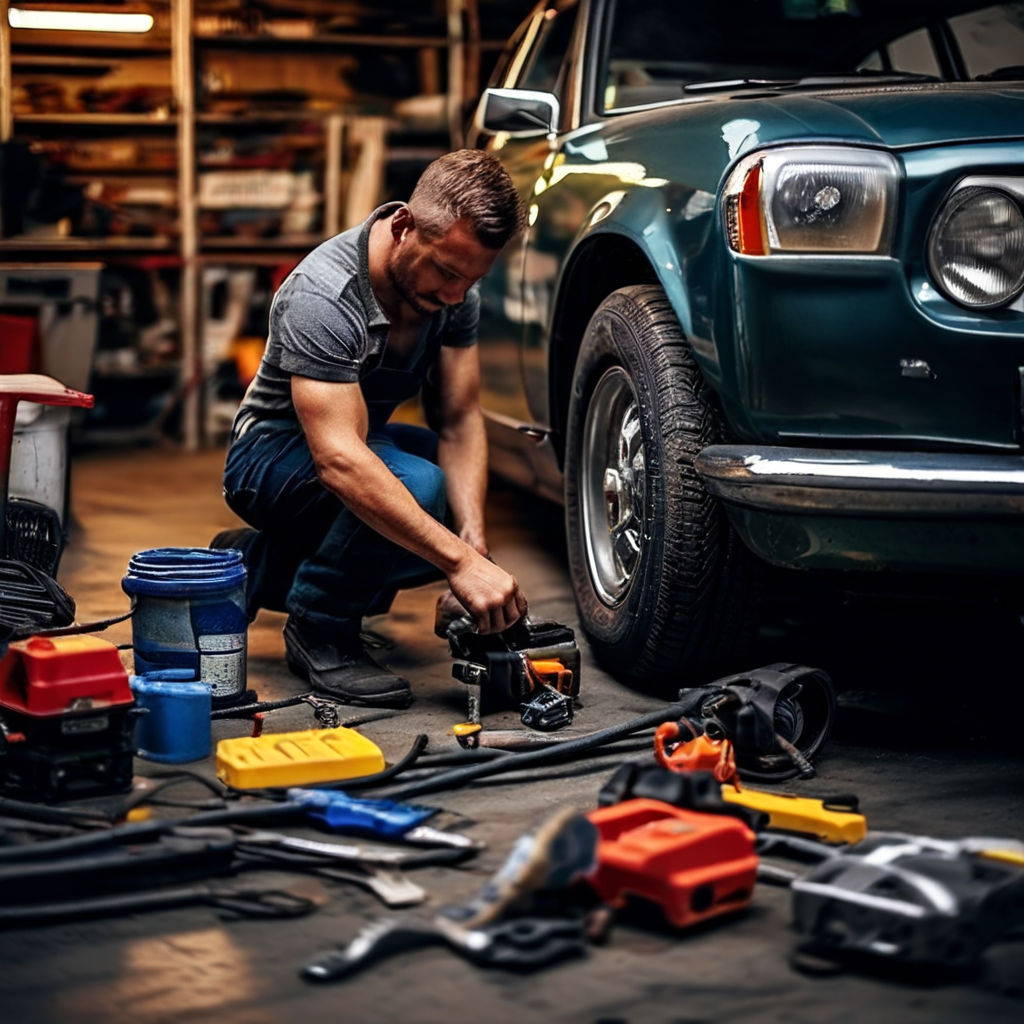
Maintaining your vehicle doesn’t always require a trip to the mechanic. With some basic knowledge and tools, you can perform essential DIY maintenance tasks that save you money and extend your vehicle’s lifespan. This guide will cover crucial DIY maintenance tasks that every car owner should master to keep their vehicle running smoothly.
1. Regular Oil Changes
1.1. Why It’s Essential
Purpose: Engine oil lubricates, cleans, and protects the engine. Regular oil changes prevent engine wear and ensure smooth operation.
Recommended Interval: Typically every 3,000 to 7,500 miles, depending on your vehicle and oil type.
Tools Needed:
- Wrench Set: For removing the drain plug.
- Oil Filter Wrench: To remove the old oil filter.
- Oil Pan: To collect the old oil.
- New Oil and Filter: Ensure compatibility with your vehicle's specifications.
Steps:
- Warm Up the Engine: Run the engine for a few minutes to thin the oil.
- Lift the Vehicle: Use jack stands to secure the vehicle.
- Drain Old Oil: Remove the drain plug and let the oil drain into the pan.
- Replace the Oil Filter: Use the oil filter wrench to remove the old filter and install a new one.
- Add New Oil: Replace the drain plug and pour new oil into the engine.
2. Air Filter Replacement
2.1. Importance
Purpose: The air filter prevents dirt and debris from entering the engine, ensuring optimal performance and fuel efficiency.
Recommended Interval: Replace every 12,000 to 15,000 miles or as specified by your vehicle manufacturer.
Tools Needed:
- Screwdriver: For removing the air filter cover.
- New Air Filter: Ensure it matches your vehicle's specifications.
Steps:
- Locate the Air Filter: Typically found in the engine bay.
- Remove the Air Filter Cover: Use a screwdriver to remove any clamps or screws.
- Replace the Filter: Remove the old filter and insert the new one.
- Secure the Cover: Reattach and secure the air filter cover.
3. Tire Maintenance
3.1. Why It Matters
Purpose: Proper tire maintenance improves safety, handling, and fuel efficiency. Regular checks and rotations can extend tire life.
Tasks:
- Tire Pressure: Check monthly using a tire pressure gauge. Inflate to the recommended PSI.
- Tire Rotation: Rotate tires every 6,000 to 8,000 miles to ensure even wear.
- Tire Tread Depth: Use a tread depth gauge to check for adequate tread. Replace tires if tread depth falls below 2/32 inch.
Tools Needed:
- Tire Pressure Gauge: To check tire pressure.
- Jack and Jack Stands: For lifting the vehicle.
- Lug Wrench: To remove and tighten lug nuts.
Steps for Tire Rotation:
- Lift the Vehicle: Use a jack and jack stands.
- Remove Tires: Use a lug wrench to loosen and remove the lug nuts.
- Rotate Tires: Move tires to their new positions according to the rotation pattern.
- Reinstall Tires: Secure with lug nuts and lower the vehicle.
4. Battery Maintenance
4.1. Importance of Battery Care
Purpose: Regular maintenance ensures your battery remains reliable and performs optimally, avoiding unexpected failures.
Tasks:
- Clean Battery Terminals: Remove corrosion and dirt from the battery terminals.
- Check Battery Charge: Test the battery voltage with a multimeter.
Tools Needed:
- Battery Terminal Cleaner: To clean terminals.
- Multimeter: To check battery voltage.
Steps for Cleaning Terminals:
- Disconnect Battery: Remove the negative terminal first, followed by the positive terminal.
- Clean Terminals: Use a terminal cleaner to remove corrosion.
- Reconnect Battery: Attach the positive terminal first, then the negative terminal.
5. Fluid Levels and Leaks
5.1. Why Regular Checks Are Crucial
Purpose: Regularly checking and topping off fluids ensures proper vehicle operation and prevents damage.
Fluids to Check:
- Engine Oil: Check with the dipstick and add oil if necessary.
- Coolant: Ensure the coolant level is between the minimum and maximum marks on the reservoir.
- Brake Fluid: Check the level and add if needed.
- Transmission Fluid: Check according to the vehicle manufacturer’s instructions.
Tools Needed:
- Dipstick: For checking oil levels.
- Fluid Containers: For adding fluids.
Steps:
- Check Fluid Levels: Use the dipstick or reservoir markings to check levels.
- Add Fluid: Add the appropriate type and amount of fluid as needed.
6. Wiper Blade Replacement
6.1. Importance
Purpose: Good wiper blades ensure clear visibility in adverse weather conditions.
Recommended Interval: Replace every 6 to 12 months or if the blades streak or fail to clear the windshield effectively.
Tools Needed:
- New Wiper Blades: Ensure compatibility with your vehicle.
Steps:
- Lift Wiper Arm: Lift the wiper arm away from the windshield.
- Remove Old Blades: Press the release tab and remove the old wiper blade.
- Install New Blades: Attach the new blade and ensure it is securely in place.
7. Cost vs. Benefit Analysis
Cost vs. Benefit:
- Oil Change: $30 to $70, which can prevent expensive engine repairs.
- Air Filter Replacement: $20 to $40, improving engine performance and fuel efficiency.
- Tire Maintenance: $50 to $100 per tire for rotation and inflation, extending tire life and improving safety.
- Battery Maintenance: Minimal cost for cleaning, with significant benefits in avoiding battery failure.
- Fluid Checks: $10 to $30 per fluid type, preventing potential vehicle damage.
Long-Term Benefits:
- Cost Savings: Performing these tasks yourself can save hundreds of dollars in labor costs.
- Vehicle Longevity: Regular maintenance helps extend the life of your vehicle and its components.
- Enhanced Safety: Proper maintenance ensures your vehicle is safe to drive and reduces the risk of breakdowns.
Conclusion
Mastering essential DIY car maintenance tasks is a valuable skill that can save you money and enhance the longevity and performance of your vehicle. By regularly performing oil changes, air filter replacements, tire maintenance, battery care, and fluid checks, you can keep your car running smoothly and safely. These simple yet crucial tasks not only improve your vehicle’s performance but also provide peace of mind, knowing you are taking proactive steps to care for your car.

